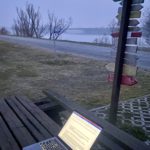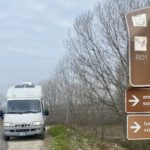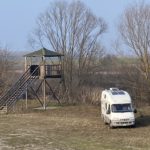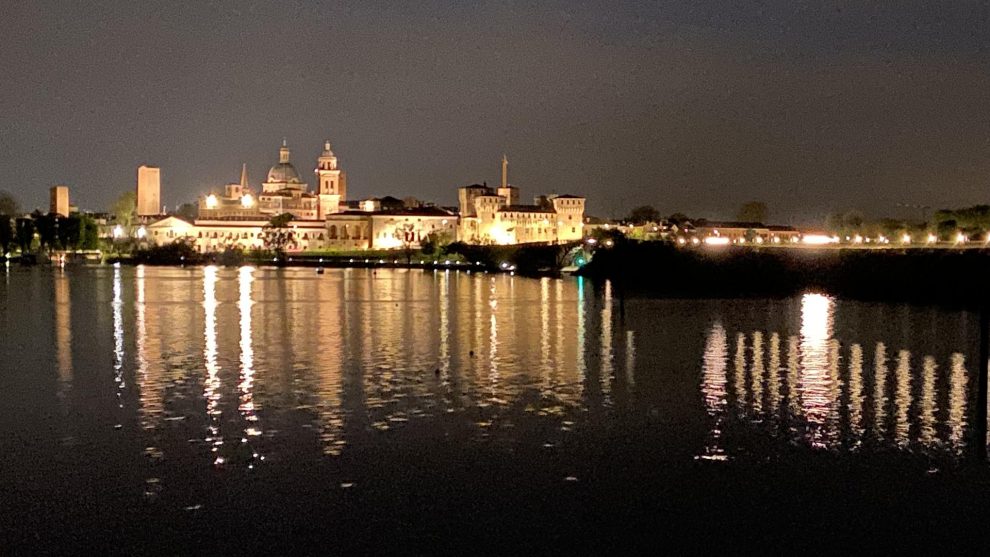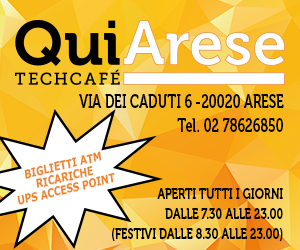April 20, 2022 – For a few days we have not only returned to the van, but even on vacation! We have chosen a “slow” itinerary that we design day by day, without making plans. So, in the past week we visited Marostica, Bassano del Grappa, Montagnana and Mantua: four places that we highly recommend for their beauty and cultural richness.
On these occasions we made use of two rest areas, one in Bassano del Grappa and one in Mantua. This has offered us, as often happens, some food for thought. Itinerant tourism by motorhome is experiencing a moment of great interest. Not only is the wanderlust back after the pandemic, but many new people are approaching this way of vacationing. And if there were enough vehicles available on the market, we would see significant growth.
Already like this, however, there are many RVers wandering around the peninsula, and many others will come from abroad, primarily Germany, where the number of vehicles in the last two years has grown with impressive numbers. The theme of hospitality, not new by the way, will arise with even greater force. Because in Italy, it must be said clearly, we are still not up to par with other European countries. But what is most worrying is that the way we prepare for an epochal transformation is not always the ideal one.
The reception of motorhome campers is based on three different types of “spaces”: the parking lot, the rest area and the campsite. Which one to make available and use and how much to charge it depends on many factors: on the tourist side, the type of location, its crowding during the visit and the need or not to have specific services such as electricity and water loading/unloading must be evaluated; on the local administration side, the availability of spaces and the management of tourist flows and traffic.
There is therefore never a single answer, which often emerges among the opinions of campers (always and only free parking, rather than “the holiday is in a campsite”) and local administrators (who often would like to confine recreational vehicles in specific spaces). In what often becomes a harmful contrast, we want to give our humble point of view.
The parking lots
When a RVer moves, he often need temporary parking. It can be to visit a tourist attraction, a restaurant, the historic center of a town, a park. It is good to remember (always) that motorhomes are equated by the Italian Highway Code (art. 185) to cars (category M1) and therefore can pass and park in the same spaces, naturally respecting the stalls that delimit them.
This already places a limit on where a motorhome can be parked, because the “standard” measurements of most car parks are 2.5 by 5 meters, meaning almost no recreational vehicle can park there regularly because it would protrude from the designated space. Fortunately, the measures are often more abundant or there are longitudinal parking spaces delimited only by the line that follows the carriageway, without limitations in length for vehicles.
Despite this, many administrations believe they need to put bars to limit the height of vehicles or the transit of motorohomes. If there are no objective reasons, these rules are not legal. It is clear, however, that in the presence of a prohibition sign it is useless to be stubborn to assert one’s rights: arguing with a local policeman who simply does his duty will not bring us anything positive.
If, on the other hand, you are sanctioned or find a situation that is difficult to accept, our advice is to ask for the support of the Associazione Nazionale Coordinamento Camperisti (ANCC), whose lawyers continuously work to help us. Obviously, you should not (and cannot) use the ANCC only when you have a fine in hand, but it is good to register and remain registered at least as long as you use a recreational vehicle: it costs from €20 to €35 per year. However, remember to always use common sense: if possible, avoid places that are too crowded and to park obstructing the view of the shop windows or in front of the windows of the house. The fewer opportunities for discussion are created, the more peaceful the holiday will be.
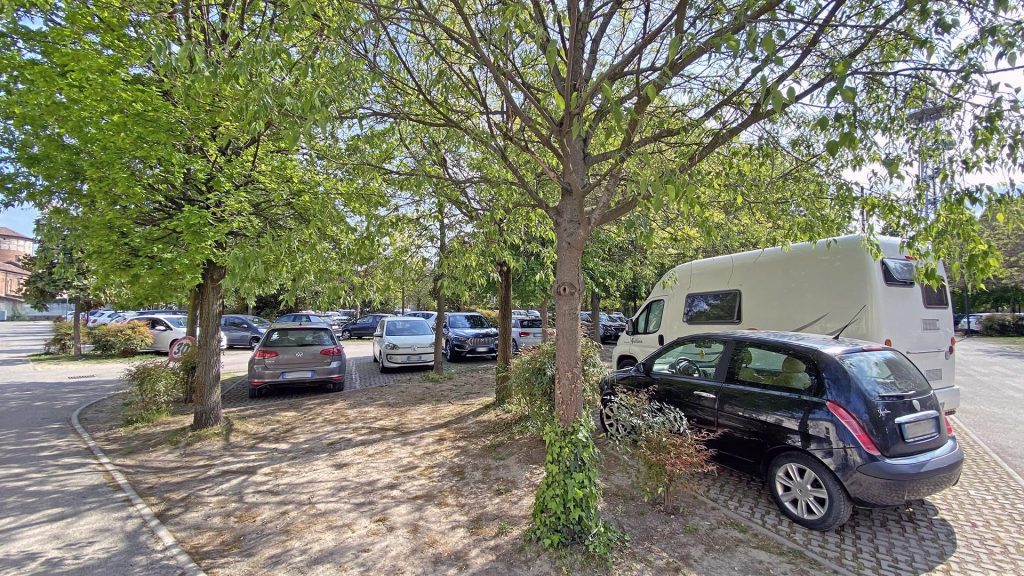
The rest areas
This is the type of landing that we have used a couple of times these days. In both cases – Bassano del Grappa and Mantua – these are areas located about one kilometer from the city center. An affordable distance for those who love to walk and that does not create problems for those who travel with a scooter, bicycle, or motorbike. For all the others, both administrations have provided a shuttle bus (€1.20 per ticket in Veneto, free in Lombardy) that takes you to the city center every few minutes.
Speaking of rest areas, our idea about prices fairness was already expressed it in this post. Both of those visited are correctly within the parameters: that of Bassano del Grappa, with electricity included, cost us €10, while in Mantua, where there are also heated bathrooms with hot showers included, we spent €21.
Here, however, a bit of topicality is grafted. The Lombard municipal administration has in fact approved in recent days an increase to as much as €30 for 24 hours. The reactions were not long in coming and, in the wake of the protests, the increase was not applied during the Easter period. Now, according to the insiders we spoke to, it remains to be seen whether or not the new tariffs will proceed. In our opinion it would be a mistake: 30 euros is a valid price for a campsite, not for a rest area where – by regulation – it is not possible (or could not, given how much rudeness is rampant) to open the awnings and where it is forbidden arrange tables and chairs outside. Such a fare does nothing but discourage the traveling tourist.
There are those who argue that those who buy a recreational vehicle should be able to bear expenses of this type without any problems, given that they are basically on vacation. But in our opinion, a tourist must be able to freely decide where to spend their money in the most convenient way. However, not everyone who owns a motorhome can afford to spend money without a minimum of attention. The point is that everything should be related to the services offered. Which must not overlap with those of the campsites.

The campsites
Here we come to the last point. The campsite, for an itinerant tourist, should not be considered the only legitimate landing place, but one of the elements that make up the open-air accommodation. Campsite is chosen for example when there are children, who thus have a “protected” place where they can play freely; it is preferred by those who stop in a locality for a few days; it is used by those who need services that are obviously not available in the car parks and in places where there may not be a rest area.
But they are fundamental structures for tourist accommodation. Unfortunately, we often see “drifts” that do not convince us. For example, the fashion that tends towards the all-inclusive village or glamping often penalizes the availability of pitches for the itinerant tourist, as well as increasing the average price to levels that are not very acceptable. Of course, there may be those who prefer an open-air tourism model devoted to luxury, but people who are looking for a more “basic” relationship with nature should not be forgotten. After all, in the world of hotels, they range from guesthouses to 5-star hotels and in almost every location, tourists can choose the type of accommodation they prefer or can afford.
And then there is the question of opening times: many facilities are open only six months a year and there are places where out of season nothing is available: neither basic services nor more structured hospitality. But those who own a motorhome or van hardly use it for only six months a year. And it goes beyond all pushed to always use structures equipped for loading and unloading (which can NEVER be carried out in places that are not designated). Ignoring the issue only favors illicit behavior.
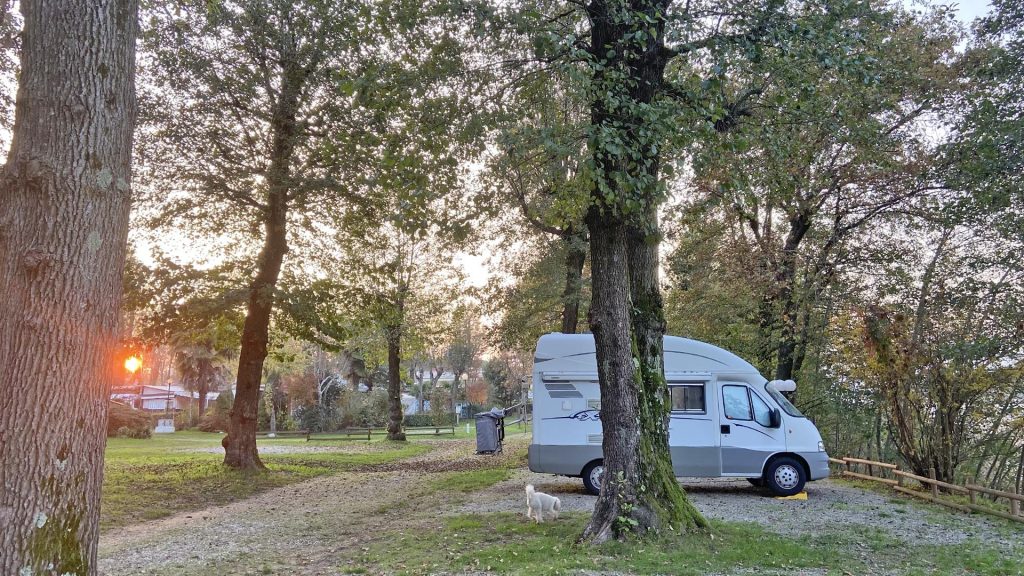
Our vision
So, we have some suggestions, which certainly does not want to be a panacea for all ills, but that if it were taken into consideration in some way at the legislative level it could help the sector to develop more rationally.
For car parks, for example, it is necessary that the municipalities do not discriminate on the basis of the type of vehicle and instead try to create dedicated spaces, where the size of the stalls is not a problem for motorhomes.And in every municipality there should be a mandatory camper service with the possibility of disposing waste in a differentiated way: it is an economic structure to be built, but essential to enable the traveling tourist to use his vehicle correctly.
For rest areas, the advice is not to exaggerate with the prices or even with the services: they must not become unwanted competitors of the campsites, but simply offer a higher step in the hospitality chain, where the main discriminant is the current offer. The place must be pleasant, safe, if possible shaded and not too far from the inhabited center. An offer of tourist information on site would help the visitor understand what activities can be carried out in the area, creating a more lasting bond that can push him to return or to promote that place by word of mouth.
For campsites, in our opinion it would be essential to try to identify some pitches suitable for a more itinerant use, perhaps at a low price, accessible all year round where possible, even independently of the structure. A path of adjustment of this kind it should be facilitated by administrations and supported by sector associations.
We believe that in this way a virtuous path would be launched, capable of offering itinerant tourists a range of services to choose from and putting them in the conditions to make the most of the places without encouraging them to behave less civilly or clearly outside the norms.
©2022 seimetri.it – If you want to leave a comment on this article, you can do it on our Facebook page





